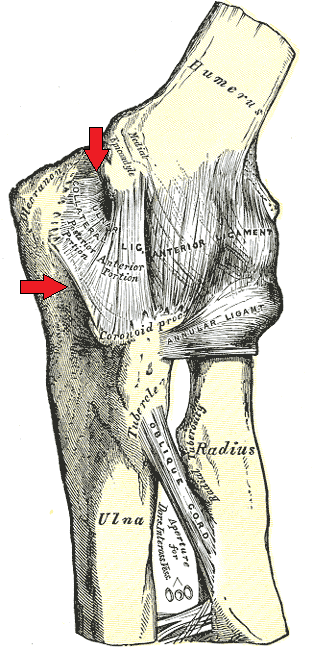In order to understand this condition, it is important to understand the anatomy and function of the wrist and hand. Please read Wrist Pain Info / Hand Pain Info’s sections on wrist anatomy and hand anatomy. For information on the biomechanics of the wrist and hand please read Wrist Pain Info / Hand Pain Info’s section on wrist and hand biomechanics.

What is the ulnar collateral ligament and what is its function?
The ulnar collateral ligament is a ligament on the inside of the thumb that connects the metacarpal bone to the first phalanx at the base (bottom) of the thumb. This ligament prevents the thumb from pointing too far away from the hand and supports pinch and grasp activities, acting like a hinge to keep the main thumb joint (the metacarpophalangeal joint) stable.
What is an ulnar collateral ligament sprain?
A sprain to the ulnar collateral ligament occurs when the ligament gets stretched or torn, usually as a result of an injury. The severity of the sprain may be mild (grade I), moderate (grade II) or severe (grade III). Severe tears usually mean that the ulnar collateral ligament is completely torn.
What does an ulnar collateral ligament sprain feel like?
Depending on the severity of the sprain, an ulnar collateral ligament sprain may or may not hurt right away. There may be bruising, tenderness at the bottom of the thumb, swelling and/or an inability to grasp items between the thumb and index finger.
What causes an ulnar collateral ligament sprain?
Any type of injury in which the thumb is pulled away from the index finger can result in an ulnar collateral ligament sprain. For example, falling on an outstretched arm and landing on the tip of the thumb. The ulnar collateral ligament can also be injured with repetitive gripping between the thumb and index finger leading to gradual loosening of the ulnar collateral ligament.
What other information is available on ulnar collateral ligament sprains?
Visit Joint Pain Info for information on other joint injuries and problems.
